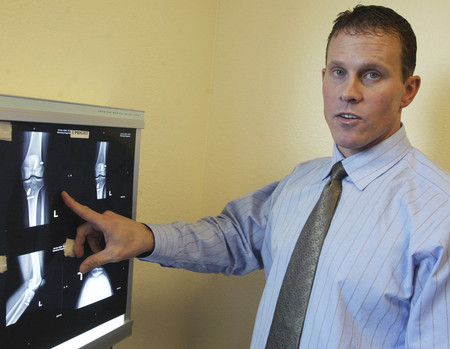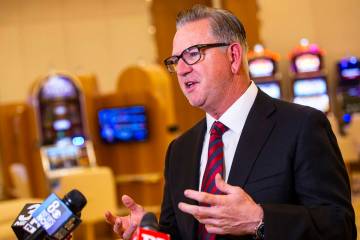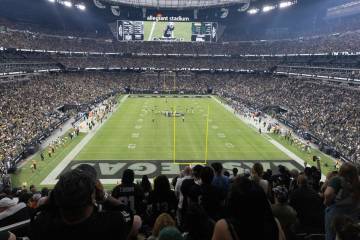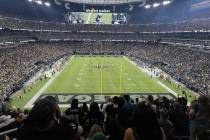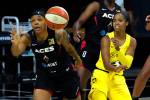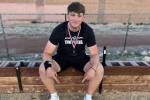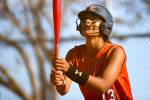Doctor helps put injured athletes back on the field
Dr. Timothy Trainor will have a steady stream of work as long as daytime desk jockeys take to soccer and softball fields after work and push their aging, unconditioned bodies to the limit.
As a partner in Advanced Orthopedics and Sports Medicine, Trainor repairs sports-related injuries to knees, shoulders and, to a lesser extent, elbows, hips and ankles. Trainor's patients include careerists who push their bodies just a little too hard in the office-league basketball game and high-school athletes looking to preserve function and play competitive sports for years to come.
Trainor's second job is a little less routine. When he's not fixing blown-out knees and torn-up shoulders, Trainor works as the consulting physician for the Nevada Athletic Commission. There, Trainor screens comprehensive medical records on every boxer, kickboxer and mixed martial artist who wants to fight in Nevada to ensure combatants are healthy enough to survive battle.
Question: What's the worst injury you've seen and how did you spare the person the most function?
Answer: I was in the military and served in Iraq. Soldiers would lose parts of their index fingers to bombs and bullets. To give them back a trigger finger, I'd amputate what was left of the index finger, and turn their middle finger into an index finger, giving them a "Mickey Mouse" hand with four fingers. It gives them back a trigger finger, so they can still be a soldier.
Other than that, something that is unique to our practice is double-bundle ACL (anterior cruciate ligament) repairs. Conventional ACL reconstruction uses a single-bundle technique. The double bundle is a little more complex, and myself and my two partners are the only ones here doing it. The ACL is made up of two bundles, not a single bundle, so using a double-bundle technique in theory recreates a more anatomically normal ACL. We've done 10 to 20 ACLs with double bundles since the summer.
Question: How did you connect with the Nevada Athletic Commission?
Answer: The commission sent invitations to doctors to apply for the job. I think I got it for a few reasons. I had boxing experience at Notre Dame, where I was the runner-up my sophomore year in the school's Bengal Bouts competition. When I was in the military, I was a ringside physician for the Marines' boxing program. And as an orthopedic surgeon, I have a major concentration in sports. I'm board-certified in sports medicine.
Question: What does your work for the commission consist of?
Answer: We get MRIs (magnetic resonance imaging) and MRAs (magnetic resonance angiographies) on almost everyone who competes. We're looking for subdurals (brain bleeds) and other technical things that show prior trauma to the head. Everyone also gets HIV and hepatitis B and C tests to check for communicable diseases transmitted via blood. If one boxer is bleeding on the other, or if blood spatters into the stands, it could cause problems for fans or people at ringside.
The other big thing we look at is eye exams. We look for detached retinas, and to make sure participants are not essentially blind. If they don't have a certain level of vision, we're not going to let them compete. Everyone also gets a complete physical exam, and I review that.
Question: If you're evaluating fighters for a big match, like the recent one between Manny Pacquiao and Miguel Cotto, do you feel pressure to clear people because it's such a major event?
Answer: I don't think about that at all. I'm looking at objective information and making a very objective decision. I don't look at the names until I after I've reviewed everything, and then I check to make sure the right person is competing, and to make sure the test dates are correct.
Question: Have you ever not cleared someone to fight?
Answer: It's pretty uncommon. I have reviewed at least 2,000 records, and of those, there have probably been five or so I haven't cleared. For the most part, these are young individuals who are very healthy athletes. The most common reason I don't clear someone is a problem with their eyes, be it their vision is not good enough, or they've had retinal damage. I have also had people test positive for hepatitis C, and I've been unable to clear them. If someone has a subdural bleed, we won't let them fight. Besides that, if someone has a questionable brain lesion showing on his MRI, I will send him to a neurosurgeon. If the neurosurgeon sends a letter stating the athlete isn't at higher risk, then we clear him.
Question: Do you enjoy watching boxing?
Answer: Oh, sure. Sometimes, I will go to the matches. I enjoy both boxing and mixed martial arts. I like the athleticism it takes to compete in those sports. Unless people have actually done it, it is difficult to understand how hard it is to stand in a ring and throw punches for 10 rounds, or even three rounds. It's similar to marathon-running in that it is much more difficult than it looks.
Question: When you watch, do you think more like doctor and less like a fan?
Answer: Yes. Every now and then, I'll see a blow or a takedown and say, "That's going to be a problem."
Question: After you saw Miguel Cotto's face in his fight with Manny Pacquiao, did you think he was in trouble?
Answer: People have asked me that question. "He looks horrible," they said. I actually didn't think he looked that bad. He certainly lost the fight, but part of the reason he looked so bad is the endurance it takes to fight 12 rounds, especially against someone who is superhuman. I didn't think Cotto was hurt that badly from a medical standpoint. Sometimes, a lot of blood doesn't mean a bad injury. The face is extremely vascular. A bad cut can look horrible, but a fighter might not really be in bad shape from a medical standpoint.
Question: Why is the work you do important?
Answer: I am helping people. It doesn't even need to be the most famous athlete in the world. If I see a high-school athlete who tore their ACL sophomore year, and they were really looking forward to playing soccer for the next few years of high school and college, I can restore that person back to a functional level and get them back to playing. It's very satisfying. By far the most important part of my job is getting people back to where they want to be.
Contact reporter Jennifer Robison at jrobison@reviewjournal.com or 702-380-4512.
VITAL STATISTICS
Name: Dr. Timothy Trainor.
Position: Partner, Advanced Orthopedics & Sports Medicine; consulting. physician, Nevada Athletic Commission.
Age: 39
Quote: "I am helping people. It doesn't even need to be the most famous athlete in the world."
Family: Wife, Maribeth.
Education: Bachelor of arts, premedicine and communications, University of Notre Dame; postgraduate work, University of Massachusetts; medical doctorate degree, Northwestern University; residency in orthopedic surgery at Georgetown University Medical Center.
Work history: Military surgeon, 1997-2007; partner, Advanced Orthopedics and Sports Medicine, 2007-present; consulting physician,
Nevada Athletic Commission, 2007-present.
Hobbies: Weightlifting, fly-fishing, golf.
Favorite movie: "The Shawshank Redemption" (1994).
Hometown: Fitchburg, Mass.
In Las Vegas since: 2007.
Advanced Orthopedics & Sports Medicine is at 8420 Warm Springs Road and can be reached at 740-5327.



